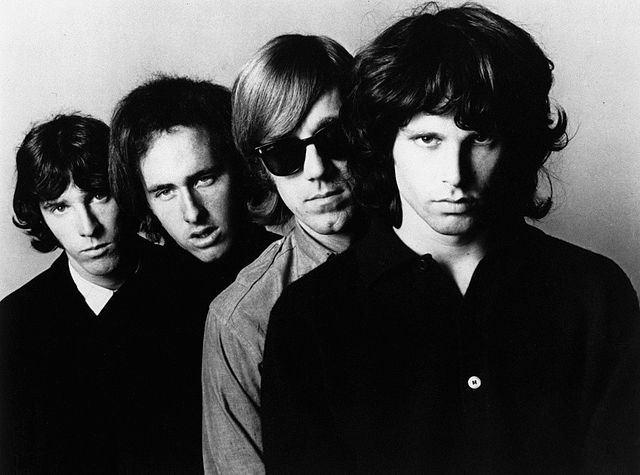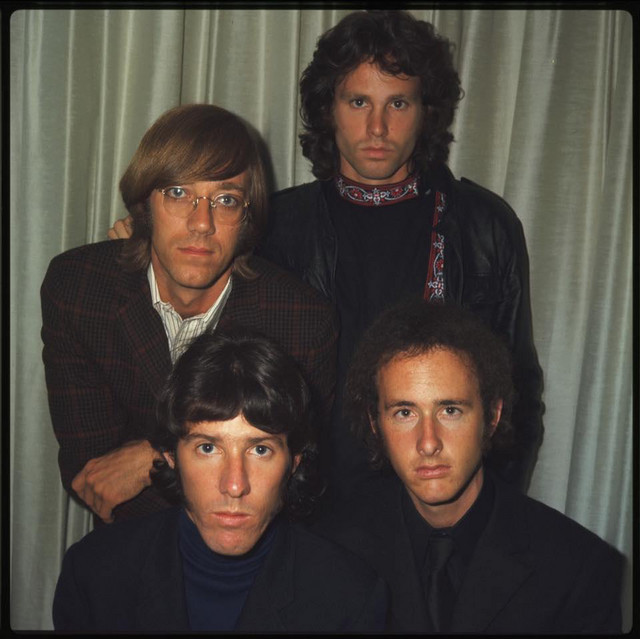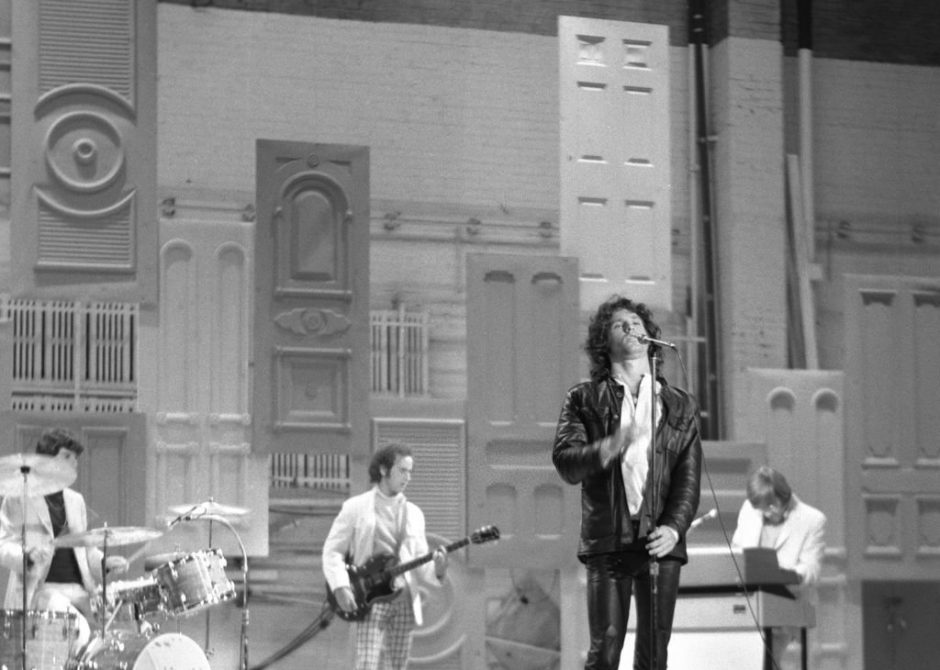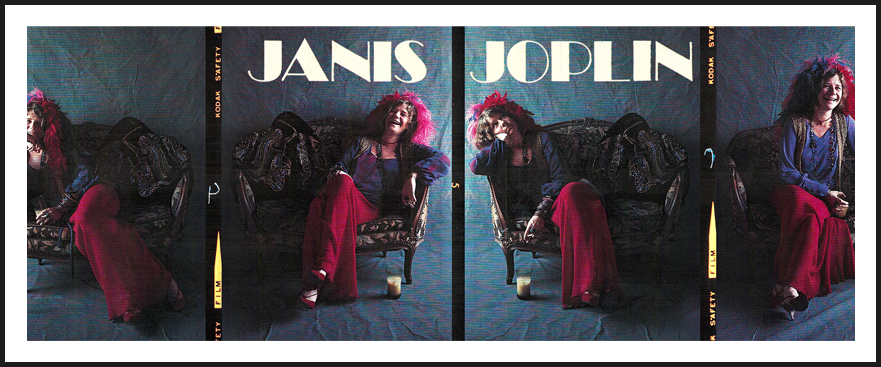In the halcyon days of 1967, when the air was thick with the sweet haze of counterculture revolution, a spectral light emerged from the kaleidoscopic chaos: The Doors’ eponymous debut album. This opus, a mercurial fusion of Dionysian fervor and Apollonian intellect, traverses the liminal spaces between reality and reverie, forever altering the auditory landscape.
The genesis of this phantasmagoric soundscape began in the twilight shadows of Los Angeles, where four musical alchemists—Jim Morrison, Ray Manzarek, Robby Krieger, and John Densmore—conjured aural potions in a dilapidated practice space on the Sunset Strip. Here, the seeds of psychedelia were sown, nourished by Morrison’s ethereal poetry and the band’s hypnotic harmonics.
The album’s opening invocation, “Break on Through (To the Other Side),” is a clarion call to transcend the mundane. Morrison’s incantations, paired with Manzarek’s swirling organ riffs, Krieger’s serpentine guitar, and Densmore’s primal drumming, beckon the listener to embark on a journey through the veils of perception. It is said that Morrison, the enigmatic shaman, penned these verses in a state of fervent inspiration, his mind aflame with visions of alternate realities.
“Soul Kitchen,” an ode to the now-mythical Venice Beach restaurant Olivia’s, where the band often sought nocturnal sustenance, is a sensual feast for the ears. The throbbing basslines and incendiary organ work create a sonic tableau reminiscent of the smoky, dimly lit enclaves of Beat poetry readings.

As the album progresses, one encounters “The Crystal Ship,” a tender yet haunting ballad. Morrison’s lyrics, evoking an oneiric voyage across moonlit waters, reveal his penchant for fusing the romantic with the surreal. This track, a crystalline dreamscape, was inspired by Morrison’s muse, Pamela Courson, and their ephemeral, star-crossed love affair.
“Twentieth Century Fox,” with its sardonic commentary on Hollywood’s superficial allure, juxtaposes biting satire with infectious melodies. This song captures the dichotomy of the band’s existence—poised between stardom and subversion, allure and alienation.
The album’s zenith, “The End,” is a sprawling odyssey that transcends the bounds of conventional music. This eleven-minute epic, a Freudian exploration of the psyche, is steeped in Oedipal undertones and existential dread. Morrison’s baritone, at once haunting and hypnotic, guides the listener through a labyrinthine narrative of death and rebirth. It is whispered that during the recording, Morrison was in an altered state, his consciousness expanded by the tendrils of lysergic acid, channeling ancient myths and personal demons into his performance.

The Doors’ Eponymous Album: A Song-by-Song Dreamscape
1. Break on Through (To the Other Side)
In the liminal opening track, “Break on Through (To the Other Side),” The Doors beckon the listener into a realm where the boundaries of reality dissolve. Jim Morrison’s voice, a mesmerizing incantation, urges us to transcend the quotidian. The relentless beat of John Densmore’s drums and Ray Manzarek’s pulsating organ riffs weave an auditory tapestry of urgency and liberation. Robby Krieger’s guitar riff is sharp and insistent, propelling the song forward. This anthem of rebellion encapsulates the essence of the band’s quest to shatter societal norms, a testament to the incendiary spirit of the 1960s counterculture. Recorded in an atmosphere charged with creative fervor, the track captures the raw energy and ambition of a band on the cusp of greatness.
2. Soul Kitchen
“Soul Kitchen” is a sensuous ode to Olivia’s, a Venice Beach haunt where the band nourished their bodies and souls. The song’s foundation lies in its throbbing bassline and the intricate, incendiary organ work by Manzarek, creating a smoky, nocturnal atmosphere reminiscent of dimly lit jazz clubs and Beat poetry readings. Morrison’s lyrics, a blend of longing and reverence, capture the visceral experience of seeking refuge in the warmth of familiarity amidst the chaos of urban life. The repetitive refrain, “Learn to forget,” is both a mantra and a plea, resonating with anyone who has sought solace in the comforting embrace of a beloved place.
3. The Crystal Ship
A delicate yet haunting ballad, “The Crystal Ship” transports the listener to an ethereal dreamscape. Inspired by Morrison’s muse, Pamela Courson, the song is a poetic fusion of romance and melancholy. The gentle undulations of Manzarek’s keyboard and Krieger’s guitar shimmer like moonlit waves, while Morrison’s voice, imbued with both tenderness and yearning, guides us through a nocturnal voyage of love and loss. The track’s minimalistic arrangement allows Morrison’s lyrics to take center stage, offering a poignant exploration of ephemeral beauty and the fragility of human connections.
4. Twentieth Century Fox
“Twentieth Century Fox” offers a sardonic commentary on the superficial allure of Hollywood. With its infectious melodies and sharp lyrics, the song captures the dichotomy of the band’s existence—poised between stardom and subversion. Krieger’s jangly guitar and Manzarek’s upbeat keyboard lines provide a buoyant backdrop to Morrison’s biting critique of a woman consumed by her own image. The track’s catchy chorus and upbeat tempo belie the darker undercurrents of its message, reflecting the seductive yet hollow nature of fame.
5. Alabama Song (Whisky Bar)
Originally penned by Bertolt Brecht and Kurt Weill for their 1927 opera The Rise and Fall of the City of Mahagonny, “Alabama Song (Whisky Bar)” is a surreal cabaret number reimagined through The Doors’ psychedelic lens. Manzarek’s carnival-like keyboard intro sets a whimsical yet eerie tone, while Morrison’s theatrical delivery brings a sense of existential irony to the lyrics. The song’s jaunty rhythm and off-kilter melodies create a disorienting effect, echoing the dissolute search for meaning and escape through hedonistic indulgence.
6. Light My Fire
“Light My Fire” stands as one of The Doors’ most iconic tracks, a quintessential anthem of the Summer of Love. Composed primarily by Krieger, the song’s extended instrumental sections showcase the band’s virtuosity, with Manzarek’s intricate keyboard solo and Krieger’s fluid guitar work. Morrison’s sultry vocals and provocative lyrics ignite a sense of urgency and desire, capturing the spirit of youthful passion and rebellion. The song’s production, with its lush, layered sound, highlights the band’s ability to meld rock with jazz and classical influences, creating a timeless masterpiece.
7. Back Door Man
A raw and visceral blues number, “Back Door Man” was originally written by Willie Dixon and popularized by Howlin’ Wolf. The Doors’ rendition infuses the song with a dark, primal energy, driven by Densmore’s pounding drums and Manzarek’s gritty keyboard lines. Morrison’s guttural, growling vocals convey a sense of defiant swagger, embodying the archetype of the rebellious outsider. The track’s aggressive, unrelenting rhythm and fierce delivery highlight the band’s roots in blues while pushing the boundaries of the genre into more uncharted, psychedelic territories.

8. I Looked at You
“I Looked at You” offers a brief respite from the album’s darker themes with its upbeat, almost pop-like structure. The song’s bright, jangly guitar riff and cheerful organ melody provide a counterpoint to Morrison’s earnest vocals. Though lyrically simpler than some of the other tracks, it captures a moment of innocent infatuation and youthful optimism. The track’s brevity and straightforwardness offer a glimpse into the band’s versatility and ability to craft catchy, radio-friendly tunes without sacrificing their distinctive edge.
9. End of the Night
“End of the Night” is a brooding, hypnotic journey into the subconscious. Krieger’s eerie, languid guitar lines and Manzarek’s moody keyboard swells create a sense of foreboding, while Morrison’s deep, echoing vocals deliver cryptic, evocative lyrics inspired by William Blake and French symbolist poets. The track’s slow, deliberate pace and dark, ambient soundscape envelop the listener in a twilight world of introspection and existential dread. This song exemplifies The Doors’ talent for blending literary influences with innovative musical compositions, forging a path into the darker recesses of the mind.
10. Take It as It Comes
With its driving rhythm and upbeat tempo, “Take It as It Comes” urges a philosophy of living in the moment. Densmore’s tight drumming and Manzarek’s vibrant organ lines propel the song forward, while Krieger’s crisp guitar riffs add a touch of urgency. Morrison’s lyrics, echoing the teachings of Maharishi Mahesh Yogi whom the band had encountered, advocate for patience and acceptance. The song’s energetic delivery and positive message provide a dynamic contrast to the album’s more introspective tracks, highlighting the band’s multifaceted approach to their art.
11. The End
The album concludes with “The End,” an epic, eleven-minute odyssey that transcends the bounds of conventional music. This track is a Freudian exploration of the psyche, steeped in Oedipal undertones and existential dread. Morrison’s baritone, at once haunting and hypnotic, guides the listener through a labyrinthine narrative of death and rebirth. The song’s sparse, atmospheric instrumentation, with Krieger’s hypnotic guitar riffs and Manzarek’s eerie keyboard drones, creates an immersive soundscape that mirrors the inner turmoil and transcendental journey described in the lyrics. It is whispered that during the recording, Morrison was in an altered state, his consciousness expanded by the tendrils of lysergic acid, channeling ancient myths and personal demons into his performance. “The End” stands as a testament to The Doors’ ability to fuse poetic ambition with musical innovation, creating a powerful and unforgettable finale to their groundbreaking debut.

The production of this magnum opus, under the aegis of producer Paul A. Rothchild and engineer Bruce Botnick, is itself a tale of alchemical transformation. Recorded at Sunset Sound Recorders, the album harnessed the studio’s innovative techniques to capture the raw, unbridled energy of The Doors’ live performances. Rothchild, with his meticulous attention to detail, ensured that every note, every whisper, was imbued with an almost supernatural clarity.
The Doors’ debut album is more than a collection of songs; it is a tapestry woven from the threads of dreams and nightmares, a testament to the power of music to transcend the physical and touch the metaphysical. It stands as a beacon, guiding lost souls through the labyrinth of modern existence, illuminating the path to the infinite.






